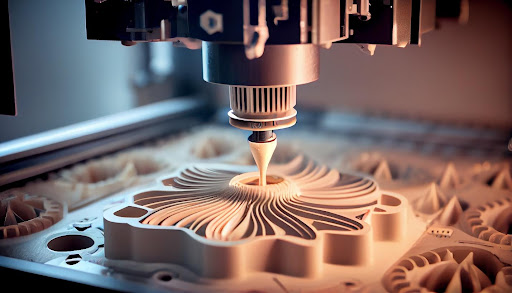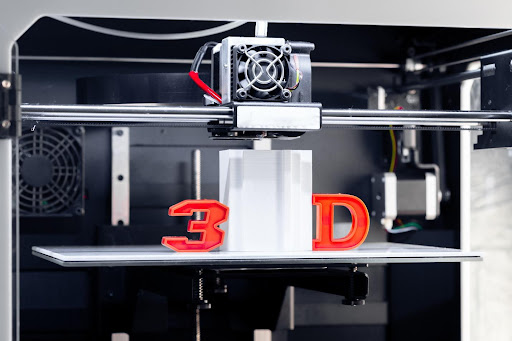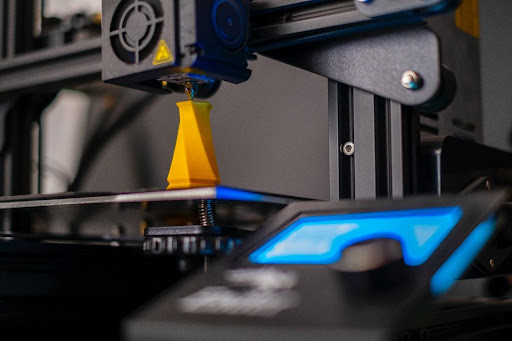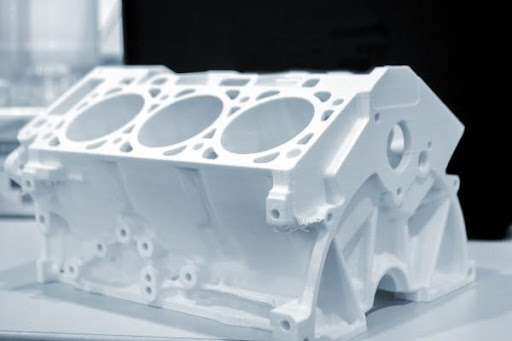3D printing stands as a groundbreaking technology that has left a profound mark on contemporary product development. It involves creating three-dimensional objects by layering materials based on a digital model. This innovative process has gained substantial significance due to its ability to rapidly produce prototypes, functional parts, and even complete products, enabling designers and engineers to iterate and test their designs cost-effectively and efficiently.
In the realm of modern product development, 3D printing offers numerous advantages. It allows for intricate and complex designs that were once difficult or impossible to achieve through traditional manufacturing methods. Moreover, the speed and precision of 3D printing enable rapid prototyping and iteration, reducing time-to-market for new products. Furthermore, this technology enables customisation, allowing for each item to be uniquely tailored to meet precise requirements and preferences.
Melbourne, Australia, is one geographical hub that has embraced the potential of 3D printing and other cutting-edge technologies. Melbourne is renowned for its thriving innovation ecosystem, characterised by a dynamic interplay of research institutions, startups, established companies, and government initiatives. This environment actively encourages and supports integrating advanced technologies like 3D printing into various sectors, including aerospace, healthcare, automotive, and consumer goods.
In this article, we will delve into the significance of 3D printing in modern product development and explore how Melbourne’s innovative ecosystem plays a pivotal role in embracing and leveraging this transformative technology to drive progress and innovation in product design and manufacturing.
The Evolution of 3D Printing Technology
Although 3D printing technology seems like a recent innovation, it has a history that spans several decades, and its journey from inception to its current state is fascinating. Here, we’ll briefly examine the evolution of 3D printing, highlighting significant breakthroughs that have made it a transformative force in various industries.

- Inception (1980s): The roots of 3D printing can be traced back to the 1980s when Chuck Hull, an American engineer, invented stereolithography (SLA). This marked the beginning of 3D printing as we know it today. SLA used a process of curing photopolymers layer by layer to create 3D objects. Hull co-founded 3D Systems Corporation, which became one of the pioneering companies in the field.
- Fused Deposition Modelling (FDM, 1988): Scott Crump introduced Fused Deposition Modelling in the late 1980s. This technology involved extruding thermoplastic material layer by layer to build objects. FDM, commercialised by Crump’s company Stratasys, remains one of the most popular 3D printing methods today.
- Selective Laser Sintering (SLS, 1980s): Carl Deckard and Joseph Beaman developed Selective Laser Sintering, a technique that uses lasers to sinter powdered materials together layer by layer. SLS broadened the range of materials that could be used in 3D printing.
- The Rise of Open-Source 3D Printing (2000s): The 2000s saw the emergence of open-source 3D printing, with the RepRap project at its forefront. RepRap aimed to create a self-replicating 3D printer that could produce its parts. This initiative played a crucial role in enhancing accessibility to 3D printing for a broader audience and nurturing a worldwide community of creators and innovators.
- Multi-Material and Full-Colour Printing (2010s): During the 2010s, progress in 3D printing technology gave rise to the capability of simultaneous multi-material printing, empowering the creation of intricate and functional objects in a single printing session. Full-colour 3D printing has become a reality, further expanding the range of applications in the healthcare, fashion, and art industries.
- Metal 3D Printing (2010s): The development of metal 3D printing, or additive manufacturing, was a game-changer. It allowed for the creation of metal components with intricate geometries, making them indispensable in the aerospace, automotive, and healthcare industries. Methods such as Direct Metal Laser Sintering (DMLS) and Electron Beam Melting (EBM) laid the foundation for advancing metal 3D printing.
- 3D Printing in Biotechnology and Medicine (2010s): The medical field embraced 3D printing for applications such as custom prosthetics, patient-specific implants, and even bioprinting of tissues and organs. These breakthroughs promised to revolutionise healthcare and personalised medicine.
- Large-Scale 3D Printing (2010s): Advancements in large-scale 3D printing opened up possibilities in construction, enabling the printing of entire buildings and infrastructure components. This technology can revolutionise the construction industry by reducing costs and construction time.
- Continuous Improvement and Material Diversity: Over the years, 3D printing technologies have continually improved in speed, precision, and material diversity. An ever-expanding range of materials, including ceramics, composites, and bioinks, is now compatible with 3D printers.
In the present day, 3D printing stands as a transformative technology employed across a diverse spectrum of industries, encompassing aerospace, automotive, healthcare, and consumer goods. Its evolution from a niche concept to a mainstream manufacturing tool has been marked by significant breakthroughs, making it an essential part of modern product development and innovation. The future of 3D printing holds even more promise, with ongoing research and development poised to push the boundaries of what’s possible in manufacturing and beyond.
Importance of Prototyping in Product Development
Prototyping is a critical stage in product development, serving as a tangible representation of an idea or concept. It plays a pivotal role in refining, testing, and validating design concepts before they move to full-scale production. The importance of prototyping in product development cannot be overstated, as it offers numerous benefits that ultimately lead to the creating of successful and market-ready products.
Role of Prototyping:
- Visualisation and Concept Validation: Prototyping helps visualise and validate the design concept. It enables stakeholders to comprehend the physical structure and performance of the product, ensuring its alignment with envisioned goals and specific requirements.
- Identifying Design Flaws and Improvements: By creating a physical or digital prototype, design flaws and potential improvements can be identified early in the development cycle. This iterative process saves time and resources by addressing issues before mass production.
- User Feedback and Iteration: Prototyping facilitates gathering valuable feedback from users, stakeholders, and testers. This feedback loop ensures that the product meets user expectations and needs, leading to iterative improvements for a better result.
- Cost-Efficiency: Detecting and rectifying design flaws during the prototyping phase is more cost-effective than making changes in the later stages of production. Prototyping helps minimise costly errors by allowing adjustments in the design before mass production begins.
- Risk Mitigation: Prototyping helps understand and mitigate the product’s design, functionality, and usability risks. It allows identifying potential risks and findings, ultimately enhancing the product’s reliability and performance.
- Collaboration and Communication: Prototypes are a communication tool between various teams involved in product development. They provide a tangible platform for discussing and sharing ideas and collaborating to refine the design and functionality.
Traditional Methods of Prototyping and Their Limitations:
- Hand-Crafted Prototypes: Traditional hand-crafted prototypes manually create physical models using clay, foam, or wood. While they provide a tangible representation, they are time-consuming, lack precision, and might only partially reflect the final product’s characteristics.
- CNC Machining: Computer Numerical Control (CNC) machining involves using computer-controlled machines to carve a prototype from a block of material. While CNC machining provides high precision, it can be expensive and time-intensive, especially for complex designs.
- Injection Moulding: Injection moulding is used for producing low-volume plastic prototypes. However, it requires costly moulds, making it impractical for early-stage iterations with frequent design changes.
- 3D Printing: 3D printing, though a modern method, has some limitations. Speed and production size can be constraints, especially for more significant parts. Additionally, the range of materials and their properties may differ from those required for the final product.
- Foam and Paper Prototypes: Foam or paper prototypes are often quick and cost-effective but need more detail and functionality for comprehensive testing and validation.
Prototyping is indispensable in the product development journey. It allows for informed design decisions, reduces development risks, and ultimately creates products that meet user expectations and market demands. While traditional prototyping methods have limitations, technological advancements, especially in 3D printing and digital prototyping, continue to address these constraints and enhance the prototyping process.
3D Printing: A Game-Changer for Prototyping
In product development, 3D printing has emerged as a game-changer, revolutionising the prototyping process in previously unimaginable ways. This cutting-edge technology, or additive manufacturing, involves creating three-dimensional objects by layering materials based on a digital model. Its impact on the prototyping stage of product development has been profound, offering advantages that enhance efficiency, cost-effectiveness, speed, and customisation.
Advantages of 3D Printing for Prototyping:
- Cost-Effectiveness: 3D printing significantly reduces prototyping costs compared to traditional methods. Traditional prototyping techniques often involve expensive moulds or tooling. With 3D printing, there is no need for moulds, and materials are used efficiently, minimising wastage and lowering overall production costs.
- Speed and Rapid Prototyping: One of the most significant advantages of 3D printing is its prototyping speed. Complex prototypes can be produced within hours or days, enabling rapid iterations and quick feedback loops. This accelerated timeline translates into faster product development cycles and ultimately speeds up time-to-market.
- Customisation and Iterative Design: 3D printing allows for high customisation. Designers can easily modify digital models and print updated prototypes, facilitating iterative design processes. Customisation is crucial for tailoring prototypes to specific requirements, whether they pertain to form, function, or unique features based on user feedback.
- Complex Geometries and Intricate Designs: 3D printing provides unparalleled design freedom, allowing for the development of intricate and complex geometries that would pose challenges or be impossible with traditional prototyping methods. This is particularly beneficial for industries where intricate, customised designs, such as aerospace, healthcare, and automotive, are integral to the product.
- Reduced Material Waste: Traditional prototyping methods often involve subtractive processes, removing the material to form the desired shape. In contrast, 3D printing operates through an additive process, minimising material waste by utilising precisely the amount needed to produce the prototype, thus presenting an environmentally friendly option.
- Enhanced Product Testing and Validation: 3D printed prototypes offer a high level of detail and accuracy, allowing for comprehensive testing and validation of form, fit, and function. This ensures that potential design flaws and improvements are identified early in development, leading to a better final product.
- Bridge to Production: 3D printed prototypes can bridge production, showcasing the product’s design and functionality to stakeholders, investors, or potential customers. They provide a tangible representation that aids in securing funding or generating interest before moving to full-scale manufacturing.
Melbourne’s 3D Printing Ecosystem
Melbourne, Australia, boasts a vibrant and thriving innovation and technology landscape, making it a hotspot for cutting-edge industries like 3D printing. Known for its dynamic blend of research institutions, startups, established companies, and government initiatives, Melbourne has cultivated an ecosystem that actively encourages and supports adopting advanced technologies, including 3D printing.
Overview of Melbourne’s Innovation and Technology Landscape:
- Research and Education: Melbourne is home to world-renowned universities and research institutions that are pivotal in advancing technology and innovation. Institutions like the University of Melbourne, RMIT University, and Swinburne University of Technology have strong engineering and design programmes contributing to 3D printing research and development.
- Startup Ecosystem: Melbourne has a thriving startup scene focusing on technology and innovation. The city’s numerous co-working spaces, accelerators, and incubators support entrepreneurs in bringing their 3D printing and tech-related ideas to fruition.
- Industry Collaboration: Melbourne encourages collaboration between academia and industry. Organisations like the Melbourne Advanced Manufacturing Precinct (MAMp) facilitate partnerships between researchers and businesses, fostering innovation and adopting advanced manufacturing technologies like 3D printing.
- Government Support: The Victorian government has proactively supported innovation and technology development. Initiatives such as the Future Industries Fund and the Medical Technologies and Pharmaceuticals Sector Strategy have provided funding and resources to nurture 3D printing and related sectors.
Key Players and Organisations in Melbourne Specialising in 3D Printing Services:
- Zeal 3D: Zeal 3D is a prominent player in the Melbourne 3D printing scene, specialising in a comprehensive range of 3D printing solutions. Their expertise caters to many sectors, including aerospace, defence, automotive, architectural, mining, transport and healthcare, showcasing a commitment to cutting-edge innovation and precision in the 3D printing realm.
- Materialise: Materialise has a strong presence in Melbourne and provides cutting-edge 3D printing software and services. They are known for their expertise in creating patient-specific medical devices and surgical guides.
- CSIRO Lab 22: CSIRO’s Lab 22, located in Melbourne, is a world-class innovation centre focused on additive manufacturing. It collaborates with industry partners to develop innovative 3D printing solutions.
- MiniFAB: MiniFAB, headquartered in Melbourne, specialises in microfluidic product development and manufacturing using advanced techniques, including 3D printing. They work with clients in diagnostics, life sciences, and more.
- Australian National Fabrication Facility (ANFF): While not exclusive to Melbourne, ANFF has a presence in the city. ANFF provides researchers and industry partners access to state-of-the-art fabrication facilities, including 3D printing, for product development and prototyping.
- Local Startups: Melbourne is home to many startups in the 3D printing space. These emerging companies provide extensive services, ranging from on-demand 3D printing to tailored solutions designed for specific industries.
Melbourne’s innovation and technology landscape provides a fertile ground for the growth of 3D printing services in Melbourne and related industries. With a strong emphasis on collaboration, research, and entrepreneurship, Melbourne continues to play a significant role in advancing 3D printing technology and its applications across various sectors. As the technology evolves, Melbourne’s ecosystem is poised to remain at the forefront of innovation in the 3D printing space.
Real-world Examples of 3D Printing Success Storeys in Melbourne

Melbourne, a hub of innovation and technology, has witnessed several remarkable success stories where businesses and projects have harnessed the potential of 3D printing to overcome specific challenges and achieve groundbreaking results. Here are a few noteworthy examples:
- Anatomics: Advancing Medical Implants
Challenge: Creating patient-specific medical implants with complex geometries.
Solution: Anatomics, based in Melbourne, specialises in medical 3D printing. They faced the challenge of producing customised implants tailored to individual patients’ needs. Traditional manufacturing methods couldn’t provide the required level of precision and customisation. Anatomics turned to 3D printing to address these challenges.
Outcome: Anatomics successfully designed and 3D printed a titanium sternum and ribcage for a Spanish cancer patient. This achievement showcased the power of 3D printing in creating highly personalised and intricate medical implants. Patients now benefit from faster recovery times and improved quality of life due to these customised solutions.
- SPEE3D: Revolutionising Metal Additive Manufacturing
Challenge: Accelerating the production of metal components while reducing costs.
Solution: SPEE3D, headquartered in Melbourne, developed a unique metal 3D printing technology called “supersonic 3D deposition.” Traditional metal additive manufacturing methods were time-consuming and costly, hindering the rapid production of metal parts. SPEE3D’s innovation aimed to address these limitations.
Outcome: SPEE3D’s technology allows for high-speed and cost-effective metal part production. This addresses the challenge of extended lead times and high production costs. Industries such as automotive, aerospace, and defence now benefit from faster and more affordable metal parts production.
- Conflux Technology: Enhancing Aerospace Components
Challenge: Optimising the internal geometries of aerospace components for improved thermal performance.
Solution: based in Melbourne, Conflux Technology focuses on advanced cooling solutions for aerospace and automotive applications. Their challenge was achieving intricate internal designs within components to enhance thermal efficiency—a task nearly impossible with conventional manufacturing techniques.
Outcome: By utilising 3D printing, Conflux Technology overcame this challenge. They can now create complex internal geometries that significantly enhance thermal performance in critical aerospace components. This groundbreaking technology can potentially improve efficiency and safety within aerospace applications.
These real-world success stories exemplify how 3D printing has addressed specific challenges businesses and projects in Melbourne face. From personalised medical implants to revolutionary metal additive manufacturing and advanced aerospace solutions, 3D printing has proven to be a versatile and transformative technology capable of overcoming complex obstacles and delivering innovative results. Melbourne’s commitment to innovation and technology drives the adoption of 3D printing, fostering a future where its applications will continue to expand and evolve.
Challenges and Considerations in 3D Printing for Prototyping
While 3D printing has revolutionised prototyping and product development, it has challenges and considerations. Gaining insight into these facets is essential for businesses aiming to incorporate 3D printing seamlessly into their product development processes.
Challenges:
- Material Limitations: The range of materials available for 3D printing can be limited compared to traditional manufacturing methods. Selecting the suitable material that meets the desired functional, mechanical, and aesthetic requirements can be a challenge.
- Surface Finish and Resolution: Achieving a smooth surface finish and high resolution in 3D printed parts can be difficult, especially with certain printing technologies. Post-processing may be required to enhance the surface quality, adding time and cost to the overall process.
- Printing Speed and Scalability: Although 3D printing offers rapid prototyping, the speed of the process can vary based on the complexity, size, and technology used. Scaling up production can be time-consuming, especially for larger or intricate designs.
- Cost Considerations: While 3D printing reduces costs in some regions of prototyping, such as tooling, the overall costs can still be relatively high, especially for specific materials and advanced printers. Cost-effectiveness can be a concern for businesses with tight budgets.
- Design Limitations: Designing for 3D printing requires a different approach due to constraints related to overhangs, supports, and structural integrity. Some design features may need modifications to ensure successful printing.
Considerations and Tips:
- Material Selection: Understand the properties and capabilities of different 3D printing materials to select the most suitable option for your prototype. Based on your project requirements, consider factors like strength, flexibility, durability, and heat resistance.
- Optimise Designs for 3D Printing: Work closely with designers who understand the principles of 3D printing to optimise designs. This can minimise material usage, reduce printing time, and improve the overall quality of the prototypes.
- Post-Processing and Finishing: Factor in post-processing needs, such as sanding, polishing, or painting, to achieve the desired surface finish and aesthetics. Plan for these steps in your project timeline and budget.
- Testing and Validation: Utilise 3D printing for rapid prototyping to test and validate your designs quickly. Iterate as needed based on feedback before finalising the design for mass production.
- Evaluate ROI and Scalability: Perform an in-depth analysis to assess the ROI (ROI) when using 3D printing for your prototypes. Consider material costs, printer costs, labour, and time savings. Additionally, determine how easily the process can scale to meet production demands.
- Collaborate and Educate Teams: Encourage collaboration and knowledge sharing among teams involved in product development. Ensure that everyone understands the benefits and limitations of 3D printing, promoting effective use and problem-solving.
By addressing these challenges and considering these tips, businesses can leverage 3D printing effectively in their product development process, ultimately accelerating innovation and delivering high-quality prototypes.
3D printing holds immense transformative potential within Melbourne’s product development landscape. As this technology continues evolving, it promises to redefine the essence of how products are conceptualised, designed, and brought to fruition in this innovation-rich city. Melbourne stands at the forefront, embracing the revolutionary capabilities of 3D printing to pave the way for a new era of product innovation and industrial advancement.

